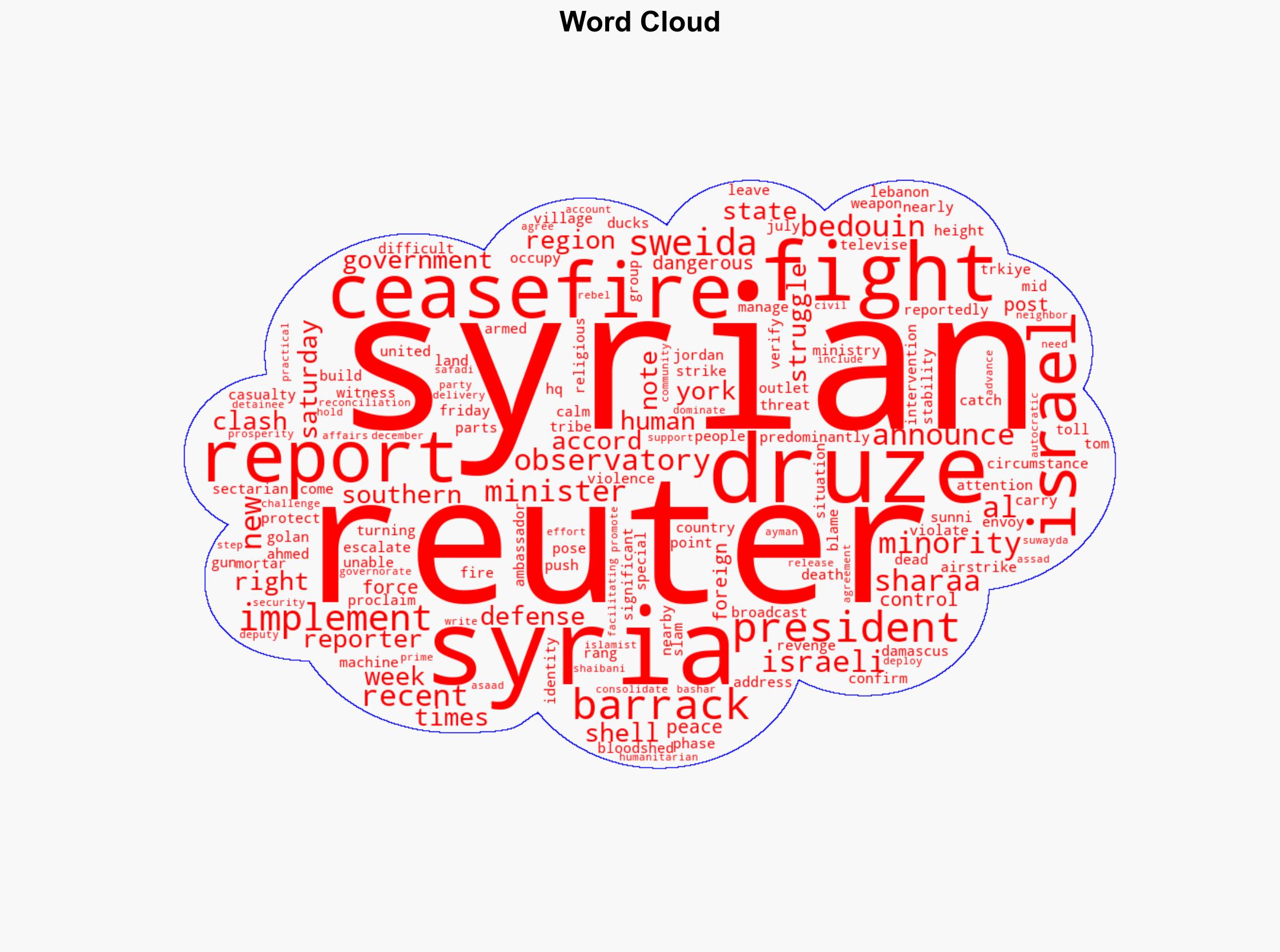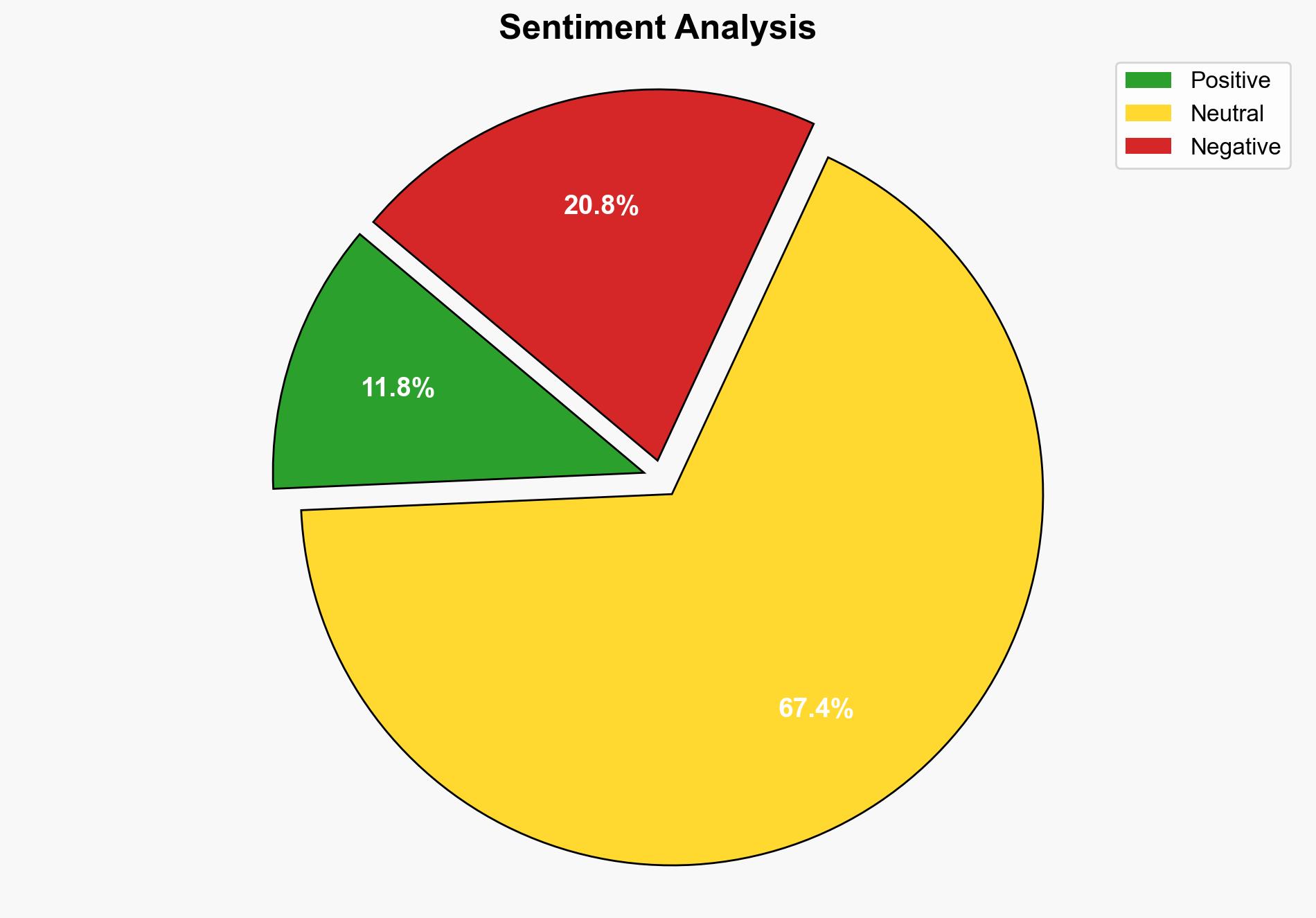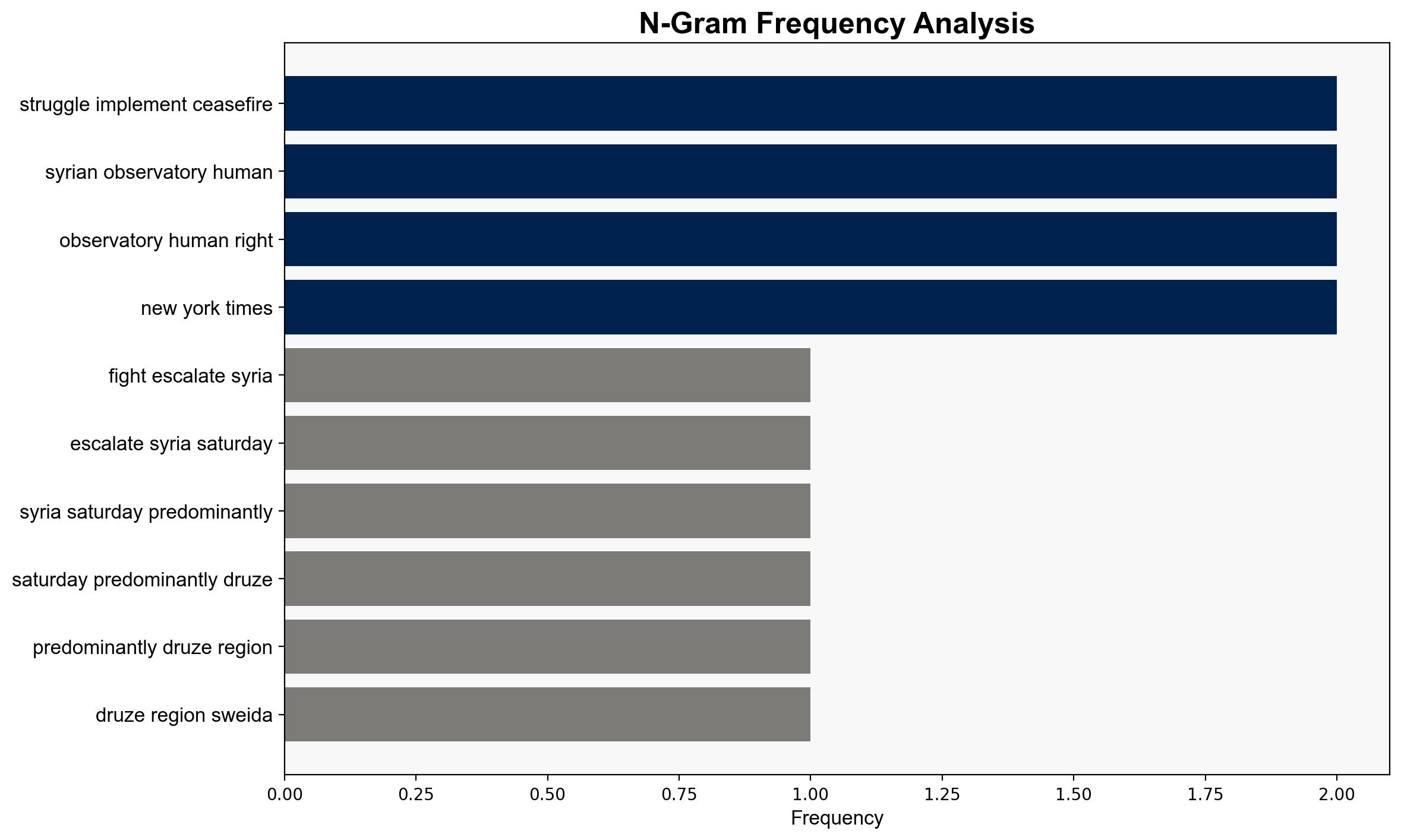Fighting Rages in Syria Despite Ceasefire As Government Forces Struggle To Maintain Peace – The Daily Caller
Published on: 2025-07-20
Intelligence Report: Fighting Rages in Syria Despite Ceasefire As Government Forces Struggle To Maintain Peace – The Daily Caller
1. BLUF (Bottom Line Up Front)
The ceasefire in Syria’s Sweida region is under severe strain as fighting continues between government forces and local groups, primarily involving the Druze minority and Bedouin tribes. Despite attempts at reconciliation and international attention, including Israeli airstrikes, the situation remains volatile. Immediate strategic interventions are necessary to stabilize the region and prevent further escalation.
2. Detailed Analysis
The following structured analytic techniques have been applied to ensure methodological consistency:
Causal Layered Analysis (CLA)
– **Surface Events**: Ongoing clashes and ceasefire violations in Sweida.
– **Systemic Structures**: Weak governance and fragmented control in southern Syria.
– **Worldviews**: Sectarian tensions between Druze and Bedouin groups.
– **Myths**: Historical grievances and identity politics fueling conflict.
Cross-Impact Simulation
The conflict’s spillover potential into neighboring countries, particularly Israel, Lebanon, and Jordan, poses significant regional stability risks. Israeli airstrikes highlight the potential for broader regional involvement.
Scenario Generation
– **Best Case**: Successful implementation of the ceasefire, leading to reduced hostilities and progress in community reconciliation.
– **Worst Case**: Escalation into a wider regional conflict involving neighboring states.
– **Most Likely**: Continued intermittent clashes with sporadic international interventions.
3. Implications and Strategic Risks
The ongoing conflict in Sweida threatens to destabilize the broader region, potentially drawing in external actors and exacerbating sectarian divisions. The fragile ceasefire underscores the Syrian government’s limited control and the potential for increased humanitarian crises.
4. Recommendations and Outlook
- Enhance diplomatic efforts to reinforce the ceasefire and facilitate dialogue between conflicting parties.
- Increase humanitarian aid to affected regions to alleviate civilian suffering and support reconciliation efforts.
- Monitor regional military activities to anticipate and mitigate potential escalations.
5. Key Individuals and Entities
– Ahmed al-Sharaa
– Tom Barrack
– Ayman Safadi
– Asaad al-Shaibani
6. Thematic Tags
national security threats, regional stability, sectarian conflict, humanitarian crisis




